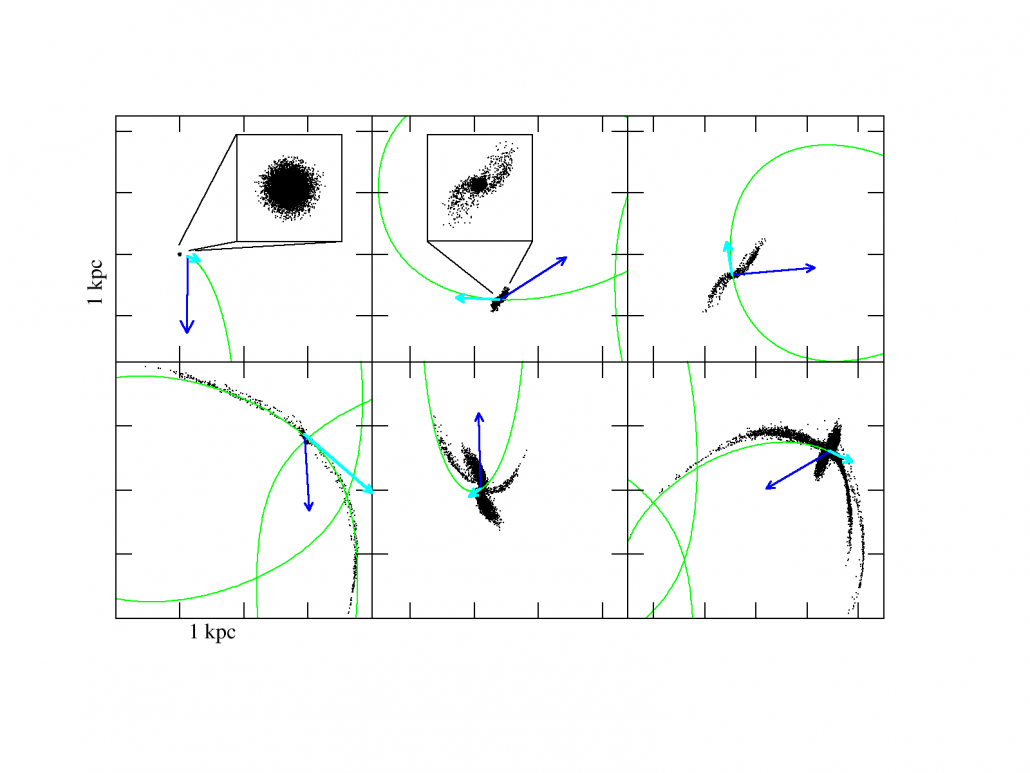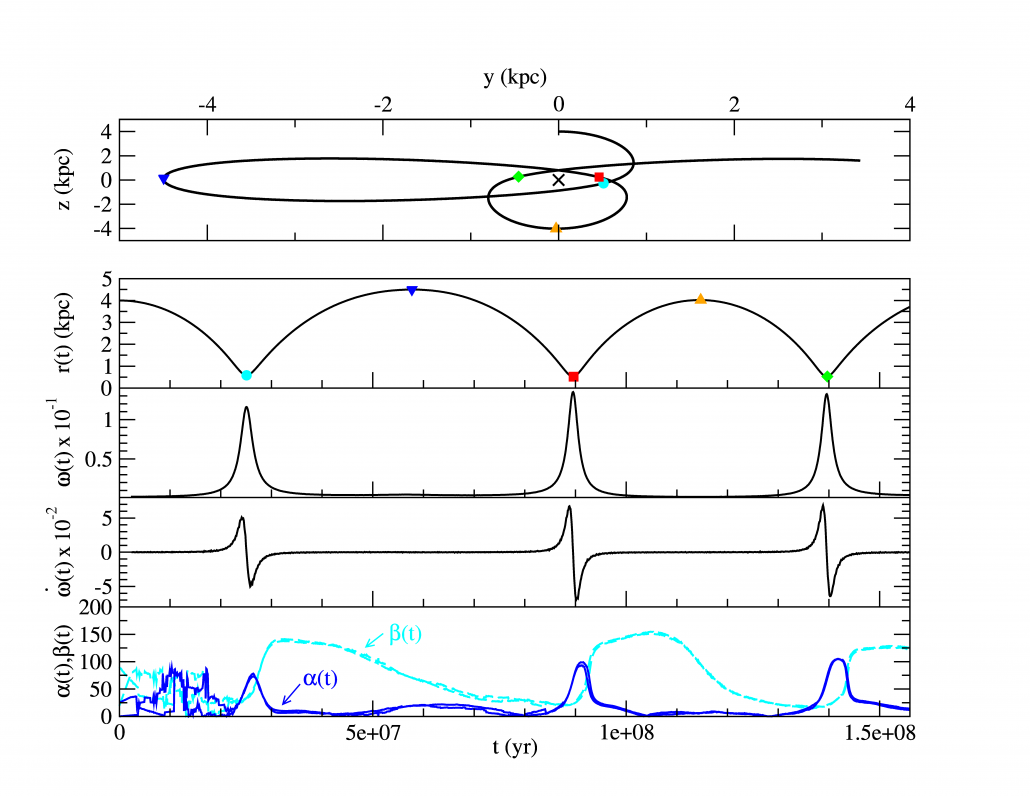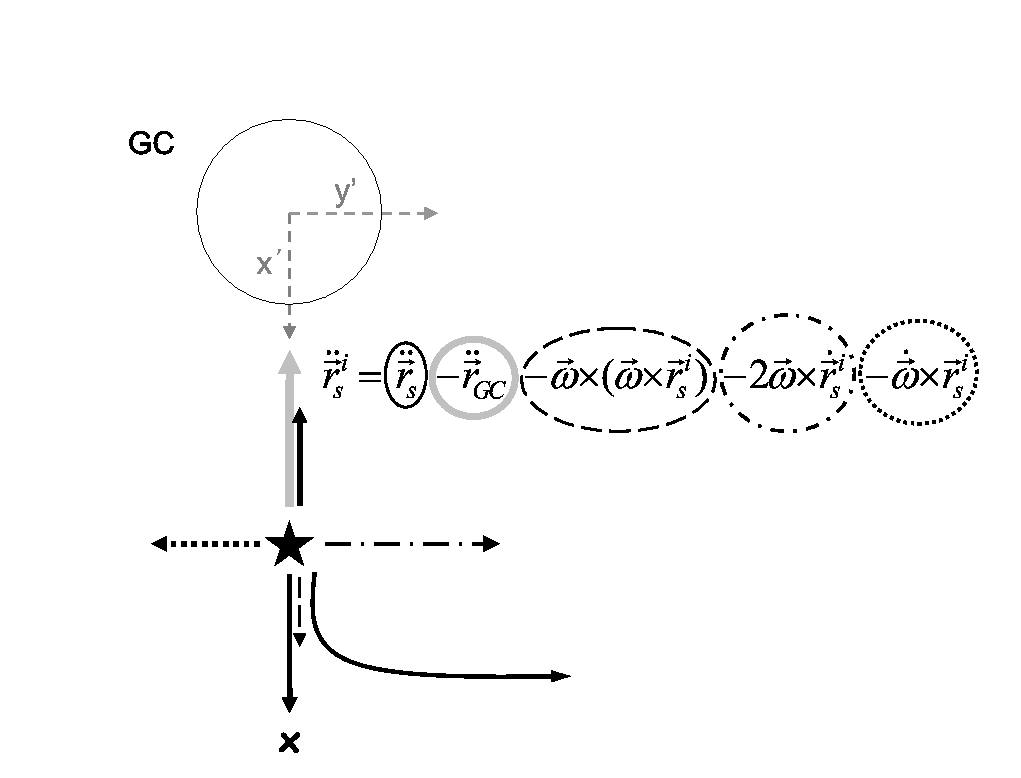Tidal tail characterization
Introduction
A globular cluster (GC) is a spherical collection of stars that orbits a galactic core as a satellite.
Globular clusters are very tightly bound by gravity, which gives them their spherical shapes and relatively high stellar densities toward their centers. The name of this category of star cluster is derived from the Latin globulus—a small sphere. Globular clusters are fairly common; there are about 158 currently known globular clusters in the Milky Way, with perhaps 10–20 more undiscovered.
Large galaxies can have more: Andromeda, for instance, may have as many as 500.Some giant elliptical galaxies, such as M87, may have as many as 10,000 globular clusters. These globular clusters orbit the galaxy out to large radii, 40 kiloparsecs (approximately 131 thousand light-years) or more.
Although it appears that globular clusters contain some of the first stars to be produced in the galaxy, their origins and their role in galactic evolution are still unclear.
Conclusions
We performed detailed N-body simulations of clusters moving in a realistic Milky Way potential. Our target is to study the evolution of globular cluster in particular focusing on the tide formation.
The strong interaction with the bulge and the disk of the Galaxy leads indeed to the formation of tidal tails, emanating from opposite sides of the cluster. Their orientation and morphology is interpreted by means of a simple model.
Fig 1 shows the formation and evolution of tidal tails around the GC. Tidal tails clearly show up after less than one orbital crossing. Their extension depends on the velocity of the cluster and on its variation along the orbit. The outer part (at distance > 7-8 tidal radii) of the tails is aligned with the cluster orbit, while the inner part shows a time varying shape. When the cluster approaches its apogalacticon, they divide into multiple “arms”, as observed in NGC 288 and Willman 1. Cyan arrow is the GC velocity vector; blue arrow points to the galactic center; green curve is the GC orbit.
Fig 2 shows the behaviour of some orbital quantities. The orientation of the inner tails is highly correlated to the cluster orbital phase and to the local orbital angular acceleration. This implies that, in general, the orbital path cannot be deduced directly from the orientation of the tails, unless a sufficient large field around the cluster is observed. 2nd panel: GC distance to the galactic center vs. time; 3rd panel: GC angular velocity vs. time; 4th panel: GC angular acceleration vs time; 5th panel: angles ?(t) and ?(t) between inner tail and radius vector r and angular velocity respectively.
Fig.3 shows the equation of motion of a star escaping from the GC tidal radius. When approaching the pericenter, the Coriolis acceleration (4th term) and the 5th term grow up, inducing an alignement of the tidal tails with GC orbit. Beyond the pericenter, the Coriolis term decreases while the 5th term becomes antiparallel to the Coriolis one. This implies an alignement of the tidal tails toward the direction of the galactic center, rather than toward the GC orbit. The apex quantities refer to the rotating frame.
Newton vs. MOND: Pal14
Introduction
Palomar 14 (Pal 14) is one of the least luminous globular clusters (GCs) of the Milky Way (MV = –4.95 ± 0.12) and it is located in the outer halo of the Milky Way at a distance from the Sun d ? 71 kpc (Sollima et al. 2011, hereafter S11). These characteristics make this object particularly interesting from a kinematical point of view: both its internal and external accelerations are weaker than the characteristic acceleration of the modified Newtonian dynamics (MOND; Milgrom 1983) a0? 1.2 × 10–10 m s–2 and its low binding energy makes this stellar system prone to a significant tidal stress.
Pal 14 has indeed been indicated as one of the best candidates to test MOND (Baumgardt et al. 2005; Sollima & Nipoti 2010; Haghi et al. 2009, 2011) because the global projected velocity dispersions predicted by the classical Newtonian theory and MOND differ significantly for this stellar system.
For observational reasons, statistical studies on star dynamics does not allow us to rule out MOND. On the other hand, analysis of other cluster features (binary fraction or blue straggler fraction) suggest a gravitational force weaker than the Newtonian one in the low-acceleration regime (i.e., in the opposite direction to what MOND predicts).
We try to shed light on the controversial interpretation of the kinematics of Pal 14 by presenting a statistical analysis of its projected velocity dispersion based on a Monte Carlo approach. We use the sample of radial velocities of J09 and a set ofN-body simulations in both Newtonian gravity and MOND, investigating the effect of different assumptions on M/L, binary fraction, degree of anisotropy, and cluster orbit.
Conclusions
We present the results of a detailed analysis of the projected velocity dispersion of the globular cluster Palomar 14 performed using recent high-resolution spectroscopic data and extensive Monte Carlo simulations. The comparison between the data and a set of dynamical models (differing in fraction of binaries, degree of anisotropy, mass-to-light ratioM/L, cluster orbit, and theory of gravity) shows that the observed velocity dispersion of this stellar system is well reproduced by Newtonian models with a fraction of binaries fb< 30% and an M/Lcompatible with the predictions of stellar evolution models.
We also show that, across the parameter space sampled by our simulations, models based on the modified Newtonian dynamics theory can be reconciled with observations only assuming values ofM/Llower than those predicted by stellar evolution models under standard assumptions.
Clumpy streams in a smooth dark halo: the case of Palomar 5
By means of direct N-body simulations and simplified numerical models, we study the formation and characteristics of the tidal tails around Palomar 5, along its orbit in the Milky Way potential. Unlike previous findings, we are able to reproduce the substructures observed in the stellar streams of this cluster, without including any lumpiness in the dark matter halo. We show that overdensities similar to those observed in Palomar 5 can be reproduced by the epicyclic motion of stars along its tails, i.e. a simple local accumulation of orbits of stars that escaped from the cluster with very similar positions and velocities. This process is able to form stellar clumps at distances of several kiloparsecs from the cluster, so it is not a phenomenon confined to the inner part of Palomar 5’s tails, as previously suggested. Our models can reproduce the density contrast between the clumps and the surrounding tails found in the observed streams, without including any lumpiness in the dark halo, suggesting new upper limits on its granularity.
References:
M.Montuori, R.Capuzzo Dolcetta, P.Di Matteo, A.Lepinette, P.Miocchi “Tidal tails around globular clusters:are they good tracers of the cluster orbit?” 2007 ApJ, 659, 1212
A. Sollima, C. Nipoti, A. Mastrobuono Battisti, M. Montuori and R. Capuzzo-Dolcetta “A Monte Carlo Analysis of the Velocity Dispersion of the Globular Cluster Palomar 14” 2012, ApJ, 744, 196S
A. Mastrobuono-Battisti, P. Di Matteo, M.Montuori, M.Haywood”Clumpy streams in a smooth dark halo: the case of Palomar 5” 2012, A&A, 546, L7




